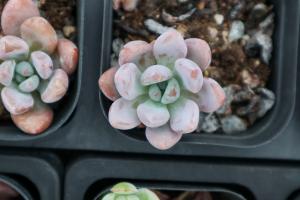Introduction
Groundhogs, also known as woodchucks, are herbivores that love to munch on plants, including tomato plants. Tomato plants are vulnerable to groundhog attacks, leading to stunted growth or death. Although they may be cute animals, they can cause serious damage to your vegetable garden. Therefore, it is essential to take measures to keep groundhogs from eating tomato plants. This article will provide some tips on how to do so.
Identify the problem
The first step in keeping groundhogs from eating tomato plants is to identify that they are the culprits. Groundhogs are very active during the day and can be seen running around or lounging in the sun. They also leave behind burrows and piles of dirt, which are signs of their presence. If you notice that your tomato plants are being dug up or nibbled on, it is likely that groundhogs are the cause.
Install a physical barrier
One of the most effective ways to keep groundhogs out of your garden is to install a physical barrier. A fence made of chicken wire or hardware cloth that is at least four feet high and extends six inches into the ground can keep groundhogs out. Make sure the fence is sturdy and buried deep enough to prevent the groundhogs from burrowing underneath.
Use repellents
Another option is to use repellents to deter groundhogs from eating tomato plants. There are many different types of repellents available, including predator urine, garlic oil, and castor oil. These products can be sprayed directly on the plants or around the garden perimeter. There are also commercial repellents available that are specifically designed to repel groundhogs. However, it is important to note that these repellents may need to be reapplied regularly, especially after rain.
Make the garden unappealing
Groundhogs are attracted to gardens that offer plenty of food and shelter. To make your garden less appealing, consider removing any sources of food or shelter that may be attracting groundhogs. For example, remove any weeds or tall grasses that may be providing cover for the groundhogs. Also, make sure to remove any fallen fruit, as this can attract groundhogs to your garden.
Conclusion
In conclusion, keeping groundhogs from eating tomato plants requires identifying the problem, installing a physical barrier, using repellents, and making the garden unappealing. It is essential to take these measures to protect your tomato plants and prevent them from being destroyed by groundhogs. With a little effort and determination, you can keep groundhogs at bay and enjoy a bountiful tomato harvest.

 how many times do yo...
how many times do yo... how many planted tre...
how many planted tre... how many pine trees ...
how many pine trees ... how many pecan trees...
how many pecan trees... how many plants comp...
how many plants comp... how many plants can ...
how many plants can ... how many plants and ...
how many plants and ... how many pepper plan...
how many pepper plan...
































